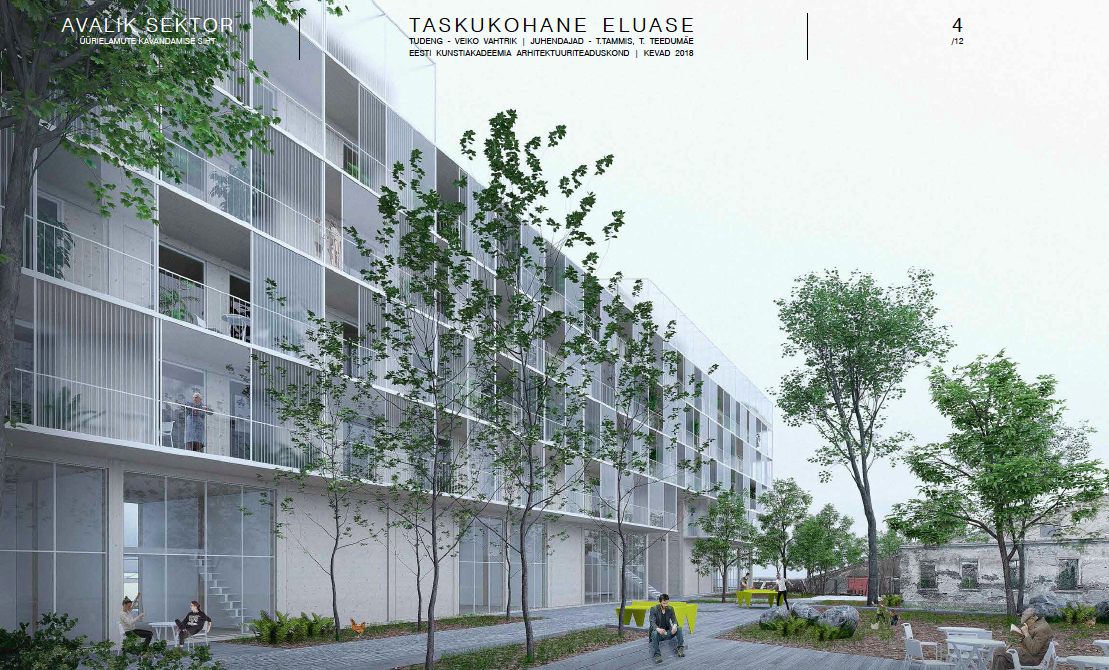The present work provides answers to questions why, how and where the proportion of affordable housing subsidised by the public sector should be increased. We are witnessing a situation where young families and other more price-sensitive households need to spend a disproportionally large part of their income on housing. Similarly, the segregation indicators in Tallinn are among the largest in Europe. Segregation and high housing costs also have a direct impact on urban sprawl making more price-sensitive residents look for housing outside the city. There is obviously no single solution to the problem, instead, the answer may lie in the inclusion and cooperation of all parties.
The first part considers the location of public sector rental housing and their architectural and constructional solutions. It is highly important in terms of the development of Tallinn and the city centre in particular – when creating a new urban space, a larger group of the social spectrum of the society needs to be included in the process. The design of the building combines affordable housing with public functions and explores the characteristic features of fl exible affordable housing
The other approach deals with the inclusion of private sector in the construction of affordable housing by means of percentage law implemented in development projects. The basic idea of the law is relatively simple: the developer is obliged to rent out a part of the fl ats in all new developments at an affordable price. In return, the project is granted several benefi ts and advantages. The third part deals with various possibilities to include future residents in the design and construction process by complementing the traditional methods with more innovative grassroot-level approaches as the role of the residents is transferred from clients to creators.
Veiko Vahtrik















































































































































































































